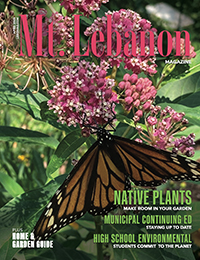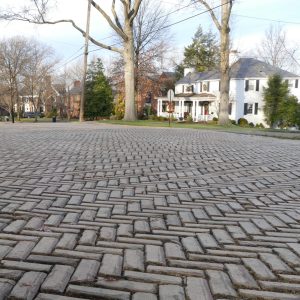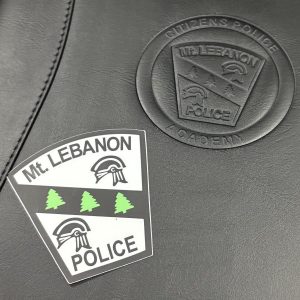Exploring in Australia

After my friends and I completed our Australian Outback Marathon (Read about the marathon in Part One of this blog)…
We signed up for a sunset camel ride in Uluru-Kata Tjuta National Park, because who doesn’t ride camels a few hours after finishing the hardest marathon of their lives? Upon arrival, we found 30 camels lying down in a row, tied to each other. Two people rode on one camel, so my son and I rode on Pete, while my husband and our daughter rode on Dozer. Holding on and leaning back were two critical steps while the camels stood up. We enjoyed our surroundings much more on top of our trusty camels, versus running in the sand.
The clouds laid playful shadows on the surface of Uluru and Kata Tjuta rock formations, while we relaxed and let the camels do all the work. We had a fantastic group of cameleers, who told us stories of some of the camels we were riding and how the animals came to Australia, since they are not native (Between 1870 and 1920, more than 20,000 camels were imported from the Arabian Peninsula, India and Afghanistan to help explore and carry goods across the hot arid land). The endless sky held billowy white clouds that stretched to the horizon as the sun peaked through them, descending slowly until the bright orange and red light danced through the clouds and dipped into darkness. Dismounting the camel made for a humorous spectacle, as stiff marathon legs, that had been in the same position for an hour, tried to hold up an aching body. At least the sand made for a soft landing. An open bar and freshly baked beer bread awaited us inside, making the perfect ending to an exhausting but exhilarating day.

Our second full day in the Outback started with a drive back to Uluru-Kata Tjuta National Park, about 20 minutes from the resort. We did a mile hike through red rocks set against the bright blue sky and warm sun. My son and I also climbed Uluru Rock, a steep granite formation that had a chain fence on the upper part to help hikers summit the windy peak. I stopped climbing mid-way, while my intrepid son went to the top. He loved it, but the climb was permanently closed in October 2019, due to a vote by the Anangu people, who felt the rock was sacred.
Later that day, we enjoyed the Sounds of Silence dinner in the national park. The evening started at the top of a hill with champagne and hors d’oeuvres, overlooking a marvelous view of the sun setting behind Uluru and Kata Tjuta. Next, we were treated to an incredible gourmet dinner that included emu, kangaroo and crocodile. Zero light pollution and a giant telescope enabled us to see planets and stars vividly in the Southern Hemisphere.
After our time in the Outback, we flew to Cairns, home of the world’s oldest rainforest (older than the Amazon rainforest) and the Great Barrier Reef. Our family and group of friends took the Skyrail, a 7.5 km scenic tour high above Barron Gorge National Park. At the top, the small village of Kuranda had a butterfly sanctuary, an aviary, reptile zoo, wallabies, and koalas. We paid for the obligatory pictures holding a koala bear and got selfies with the wallabies. Shops and touristy kiosks with handcrafted art speckled the tiny village. We tried the local beer on the deck of the historic Kuranda Hotel, built in 1880, near the Skyrail station before heading down the rainforest to the town of Smithfield. A scenic train ride was another option to get to the bottom.

Day two of Cairns began with a giant catamaran (speed boat) across the Coral Sea to Green Island. We opted to get snorkeling gear and ride in the glass bottom boat where we saw magnificent sea turtles and giant clams that were a hundred years old. I’m sure the Great Barrier Reef was much more colorful a decade or more ago, so we thought we should explore it before it turns white. Our tour guide said there were some signs of regrowth, which was promising, but still a sad reminder that we need to take care of our only planet.
Our last stop in Australia was Sydney. We took a domestic flight from Cairns to Sydney and went to the famous opera house that night to see Rigoletto, which was our kids’ first opera. It may not have been their favorite part of Sydney, but they will always remember the huge white sails that graced the Sydney Harbor. We all thought it was smaller than the pictures seemed to depict, and we did not realize there were multiple theaters in the building.

One morning, Barb, Bern and I ran to the Royal Botanic Garden, which provided a fantastic view of the opera house and the Sydney Bridge from the other side of the harbor. We sat on the famous Mrs. Macquarie’s Chair, a sandstone bench, carved by city convicts for Governor Lachlan Macquarie’s wife in 1810, that overlooks the stunning Sydney Harbor. The next day, our friend whom we met in Antarctica picked us up for a run from Bondi Beach to Coogee Beach, an 8-mile course that took us through a beautiful cemetery overlooking the ocean, and continued along the breathtaking coast. We saw surfers, paddlers and a rare yellow-tailed black cockatoo. It was one of the most scenic runs I’ve ever done. Other highlights of Sydney included: walking across the Sydney Bridge; lunch at Doyle’s on Watson’s Bay; local brews at the Lord Nelson Brewery Hotel, which is the oldest hotel, as well as the oldest brew pub, in Sydney; a ferry to Manly with another gorgeous walk along the water and the famous fish and chips from the Manly Fish Market. Barb, Bern and I were also thankful for another Antarctica reunion with three friends who live in Sydney.
I am grateful for another extraordinary escapade with my running adventure friends, but I loved sharing the experience with my family.
LeboLife blogger Carolyn Newkirk is in the process of running at least one marathon on each of the seven continents. COVID-19 put a damper on her plans to finish this goal, when her marathon in Tokyo was cancelled in 2020. She anticipates she will not get back to it until 2022.





